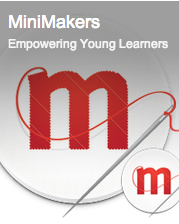The second week of the Teach the Web MOOC focused on remixing. I was excited about this topic because it’s an area I’ve just begun to explore and engage with on the web. It’s interesting how infused remixing is into our daily work as children (e.g., re-making someone’s Lego creation or making variations of a local building as a fort) or even adults (e.g., remixing a marketing approach to work for your brand) and yet how foreign it can feel when addressed head-on as the focus of an activity or lesson.
When I first thought about what type of project I would remix, I thought it would probably have to be a Popcorn video because the Thimble projects were all personal profiles/bios and they couldn’t really be changed – right?
Then, I joined the the weekly Twitter chat, which began with a focus on remixing. Kevin Hodgson (@dogtrax) asked a great question, “Can (should) we remix anything?” A number of participants discussed the nuances between remixing something with permission and remixing as a form of collaboration versus remixing as appropriation (with and without permission). When someone remixes your work that you’ve asked not to be changed using a Creative Commons license or when someone hacks in and makes changes for their own enjoyment at your loss, remix become a much less friendly word.
#teachtheweb remix invites us to talk; sometimes a collaboration; sometimes an appropriation; i think of Nishant Shah’s #dml2012 Ignite –
— Chad Sansing (@chadsansing) May 9, 2013
In contrast, @dogtrax took a direct request from me about wanting to be remixed and in true #TeachTheWeb spirit, created something awesome and inspiring. He even sent out a tweet and G+ message encouraging other MOOC participants to remix and hack my Thimble introduction. He created the page below using Mozilla’s X-Ray Goggles from the Hackasaurus Toolkit.
And then Doug Waters remixed that remix!
So of course, now inspired, I had to hack a Thimble page of my own! I chose someone from our #MiniMaker G+ Study Group. Here’s my update to Karen Young’s Thimble Intro:
After being hacked myself, I had a better understanding of the process and how creative I could be in doing it using someone else’s profile. I had a chance to consider how remixing could help me get to know a person better and how it can be an entry point for using a new tool. Similar to my experience remixing a project in Scratch for the #MediaLabCourse I learned more about the X-Ray Googles and what they’re capable of as well as more about Thimble, by remixing. I’m excited to try Popcorn for my next remixing project and to continue thinking about hacking as we move into week 3 of #TeachTheWeb and discussions of the Open Web.


















You must be logged in to post a comment.